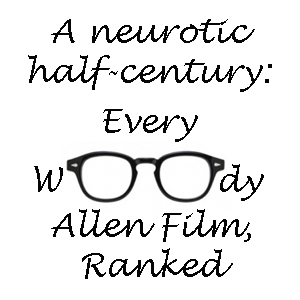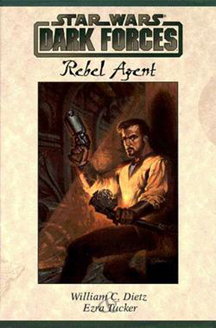Although not necessarily apocryphal, “Rebel Agent” (1998) – the second of William C. Dietz’s “Dark Forces” illustrated novel trilogy – features interpretations of Force users that seem to contrast with what George Lucas would establish in the prequels the following year.
The first book, “Soldier for the Empire,” chronicled Rebel agents Kyle Katarn and Jan Ors capturing key elements of the plans for the first Death Star and hinted that Kyle has Force powers. The sequel, illustrated by Ezra Tucker, jumps ahead to after the second Death Star’s destruction; in the intervening years, Kyle and Jan had been somewhat of an undercover spy team for the Rebellion. Inexplicably, Mon Mothma still doesn’t trust former-Imperial Katarn, telling Jan to kill him if he ever turns on them. After six years? Really? I felt like C-3PO, saying “Trust him! Trust him!” This element, along with the lack of any advancement in Kyle’s and Jan’s relationship from the end of “Soldier for the Empire,” makes me think that Dietz didn’t originally plan for a six-year gap between books.
Another oddity: The Empire imports some Tusken Raiders from Tatooine to the Sullustan moon to serve as extra security. All other portrayals of Tuskens have shown they can barely be communicated with by non-Tuskens; the idea that some of them would take a job off-planet is absurd. Perhaps it’s the result of game designers having a role in shaping the narrative.
“Rebel Agent’s” biggest oddities, though, are Dietz’s interpretation of the Jedi and the Force. The main Imperial villain, Jerec, can use the Force, and he employs several Force-users as his underlings. Dietz calls them all “Jedi,” although he thankfully uses the more accurate “Dark Jedi” on some occasions.
It’s also weird that Luke is rather nonchalant about encountering another Jedi: “A self-taught Jedi? A great deal could go wrong. Still, the path is his, and he must take it,” Luke says. Granted, it does fit with the timeline, because this takes place several years before Luke embraces the idea of starting a Jedi Academy (which Kyle will join, although he’ll be little more than a background character in many Jedi Council meetings). I suppose it’s similar to when Luke met Kiro in the Marvel comics. Still, it seems weird that he doesn’t react more strongly to these first Force-users he encounters outside of those we know from the films.
For his part, Katarn gets supernatural advice from deceased Jedi Rahn (a colleague of Kyle’s father, Morgan, who didn’t get a chance to develop his own Force abilities before he was murdered), as Dietz riffs on Obi-Wan’s disembodied advice to Luke in “A New Hope.” Rahn is actually a better teacher than Obi-Wan, because he pops into Kyle’s head with very specific instructions on what to do during battle. He doesn’t leave it at vague notions of “feeling the Force.”
Jerec somewhat steps aside as the main villain in “Rebel Agent” to make way for 8t88, a droid who is resentful of his second-class status in society. Comparisons to IG-88 and 4-LOM naturally came to my mind, and Dietz does more to explore droid psychology than any “Star Wars” author other than Michael Reaves, who chronicles the good droid I-Five in various novels.

While Katarn and other “Dark Forces” characters are largely ignored by other authors, Dietz introduces a historic moment – the Brotherhood of Darkness’ battle with an army of Jedi – that would be greatly expanded upon in the “Jedi vs. Sith” comic series and Drew Karpyshyn’s Darth Bane novel trilogy. In fact, this is the big battle – 1,000 years before “A New Hope” – that motivated Bane to create the Rule of Two, thus limiting the number of dark siders and ushering in a millennia of relative peace before Palpatine.
Tucker’s art is solid, although there are some panels that are placed on the wrong pages, and in at least one case he seems to have interpreted the author’s notes wrong. On page 29, the giant Dark Jedi named Maw is missing a lower half, Darth Maul-style. But he has a full body in Dietz’s narrative. Later, he gets cut in half in a battle, suggesting a miscommunication from writer to illustrator.
While the almost-apocryphal elements stand out in “Rebel Agent,” they aren’t really the fault of Dietz, who didn’t know how Lucas would go on to codify the Force, the Sith and the Jedi. And actually, these elements add to the fun of the book in some ways.

